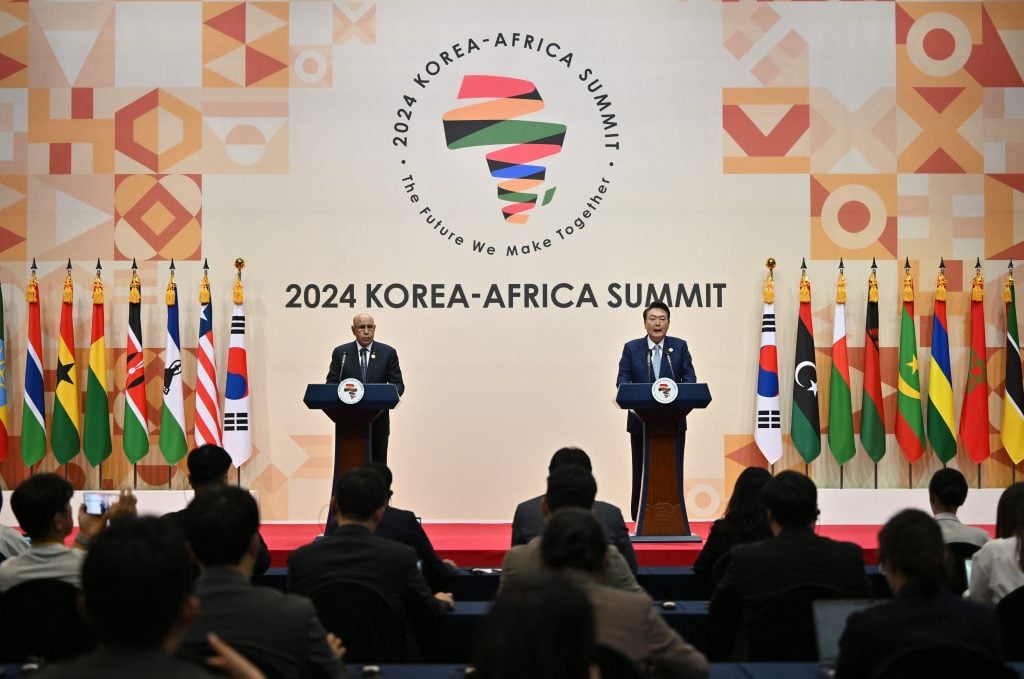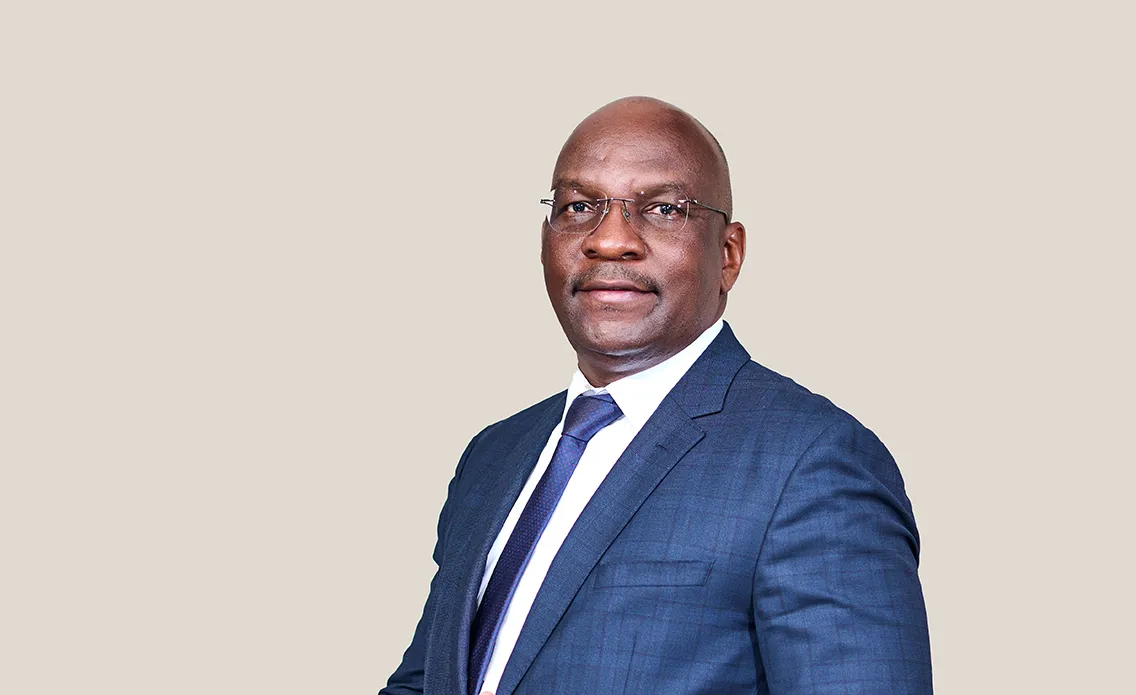
Andrew Dabalen, the World Bank’s chief economist for Africa is, perhaps surprisingly, upbeat about the continent’s economic prospects in the near term.
“Economic activity has been relatively resilient this year, despite all the uncertainty we’ve seen,” he says. “We’ve upgraded our growth forecast from 3.5% to 3.8%, and we expect it to accelerate to 4.4% in the next couple of years.”
To the casual observer, this might seem counterintuitive. The shadow of Covid-era stagnation still hangs over parts of the continent and several countries are either in debt distress, close to it or just coming out of it through International Monetary Fund-assisted programmes. And that’s aside the disruptions arising out of Washington’s new approach to global trade which has created market turbulence and uncertainty.
But there is more to the story. Despite the crises that have given much cause for concern among policymakers and analysts, some of the continent’s indicators are pointing the right way.
“Inflation is down to almost 4% on the median,” Dabalen points. “Currencies are stabilising and some are even gaining against the US dollar. Central bankers are reducing the cost of borrowing. That’s propping up consumption and supporting a modest recovery in investment.”
Trade, too, has been less bruised than initially feared. As it turns out, many African economies are not very exposed to US supply chains and so have been somewhat insulated from tariff volatility.
“A lot of the commodities we trade, such as oil and minerals, were exempt,” he notes. “And the tariffs that were imposed were on the lower side, around 10–15%, which is what most of the world got.”
While the recovery is fragile, it is quite real. The World Bank has upgraded recovery forecasts for 30 African countries, including some of the larger economies like Nigeria, Ethiopia, and Côte d’Ivoire.
Era of state-led investment over
Dabalen is however quick to sound a note of caution.
“Debt levels remain very high, and [governments] are having to starve investments in core activities like health, education, and infrastructure.”
With overseas development assistance drying up and governments having to juggle debt service with urgent social needs, the era of big state-led investments may well be over. But even here, Dabalen thinks it’s not as bad as it might look.
“Even though official development assistance (ODA) is declining, that’s mostly bilateral aid,” he clarifies.
“What has held up is multilateral development bank financing from the World Bank, the African Development Bank, and others. I believe that for the World Bank, the [trends in] net flows are actually positive.”
And while those inflows are critical for the receiving countries, Dabalen says it is not the long term fix the continent needs.
“It’s not going to be sustainable. Investment levels have basically halved globally. Public investment has declined substantially, and private investment outside the multilateral banks has been falling. Those two need to recover if we want growth above 4% or 5% going forward.”
Under its new leadership, the World Bank has made clear it wants to do more to crowd in private capital.
“Ajay [Banga, president of the Bank] gave a speech and one of the things that he said was that the World Bank is going to focus on mobilising private capital through the International Finance Corporation, doubling down on guarantees and increasing their size.” Dabalen notes. “But that has to be paired with reforms, improving regulations and the business climate, to jumpstart both domestic and foreign investment,” he adds.
For years, those reforms efforts were graded by the World Bank’s annual Doing Business report. Countries like Rwanda, Mauritius, and Togo famously used it to track their progress. The report’s suspension in 2021 amid data irregularities left a vacuum, one the Bank is now keen to fill.
“We’ve replaced Doing Business with a much more rigorous report called Business Ready, or Be Ready,” Dabalen says. “The first 50 or so countries have already been completed and the results are out. By the third year, all countries will be covered. There are more than a dozen countries in Africa that were included.” Assessments for another 50 are in the process of being completed, he says, and the bank expects all countries to be covered by the third edition of Business Ready.
Jobs at centre of agenda
If macroeconomic indicators on the counter offer some optimism, the job market tells a more grim tale.
“The working-age population in Africa is going to almost double, an increase of over 600 million people [by 2050],” Dabalen notes.
“Even though a lot of people find jobs when they come into the labour market, many of these jobs are low-productivity jobs that don’t lead to increases in incomes, reduce poverty, allow for social mobility or provide people with dignity.”
Jobs, he says, are therefore now the central pillar of the World Bank’s agenda.
“We’re putting jobs at the centre of our development strategy. The challenge is both the sheer number of jobs needed and their quality.”
That challenge is already visible on the streets. Protests in Kenya, Madagascar, Mozambique and Morocco reflect growing frustration among especially young Africans who feel locked out of opportunity.
“What you’re seeing is that even though these countries are growing, the opportunities for meaningful, productive jobs that bring social mobility are scarce,” Dabalen says. The bank’s response, he adds, is to work on the conditions that make private-sector growth and job creation possible. That means working to boost access to credit, improving competition, streamlining business registration and simplifying tax systems.
“All that will lead to businesses expanding and therefore hiring more workers. That’s the key,” he stresses.
Escaping the micro-enterprise trap
Scale is also important and that’s perhaps why the Bank has turned its focus to medium and large-scale businesses, even if Dabalen rejects the notion that is a shift in attention.
“I don’t know if to call it a shift,” he says, “but maybe it was neglected.”
The real challenge, he says, is not the existence of small businesses, but the structural barriers that keep them from expanding.
“The goal,” he explains, “is if there are small enterprises that can expand and grow into medium and large, then they deserve to be supported. The question becomes: what is preventing them from becoming medium and large?”
He describes this as a “micro-enterprise trap” that too many African economies have accepted as normal. To escape that trap, Dabalen says, policy needs to shift toward enabling firm growth and productivity. “We need to start thinking about how to support firms to grow and take advantage of specialisation, new technologies, economies of scale,” he says. “That’s what’s going to lead to the creation of jobs at scale.”
He outlines three pathways through which this transformation can happen.
“One is new high-growth firms entering the market because you’ve created the right conditions – access to electricity that’s cheap, affordable, and reliable; infrastructure that connects firms to production networks; and a sound business environment,” he explains.
“The second,” he continues, “is creating conditions in which large firms can enter as large, and medium firms can enter as medium.”
The third pathway involves targeted support for the most promising small firms already operating. The imperative is to create the right conditions that open up these pathways.
And that, he argues, does requires state action. Dabelen argues that while private enterprise and innovation are indispensable, only the state can create the foundational conditions that allow firms to thrive and markets to function efficiently.
“If you want to have ease of doing business, regulatory clarity, that’s the role of the state,” he explains. “If you want to have market access, the state can play a role there.” He recommends interventions to reduce high cost of utilities such as electricity and digital technologies.
“The reason why prices are too high is because either there are monopolies or regulations that prevent competition with the dominant state-owned enterprise,” he notes. “They can do something about that.” The other, of course, is macroeconomic stability.
Reducing the cost of borrowing
Beyond domestic reform, Dabalen is wary to offer one-size fits all solutions to the current institutions and what many are calling the reform of the global financial architecture.
“Whenever I hear about the reform of the global financial architecture,” he says, “what I always hear is the cost of borrowing.” For many African countries, he notes, access to private capital markets such as Eurobond issuances comes at a prohibitive cost.
“These countries are either excluded from the market entirely, or if they do enter, they have to pay really huge premiums.”
The discussion, he adds, also revolves around “the levels of funds flowing from multilateral development banks like the World Bank and IMF to African countries,” and how those flows can be made more responsive to Africa’s needs.
Dabalen is however realistic about the limits of what can be changed.
“On private capital flows, that’s just going to depend,” he says. “You can’t change the way these financial houses will react. What you can change is the fundamentals of your economy.”
For him, sound governance remains the best line of defence against the volatility of global markets. “The way to protect yourself is to make sure your laws are very tight and rigorous, and that your fundamentals are sound and transparent.”
On the multilateral side, however, he sees progress.
“At the World Bank, we take the debt issue seriously,” he says, pointing to efforts under the G20 framework to ensure faster, fairer debt treatment.
“A lot of these countries should either get debt restructuring or even debt reduction,” he argues, adding that eligibility could be expanded beyond low-income countries to include some middle-income economies. Still, he concedes, “because there are so many actors, getting to a resolution is very, very difficult. It’s not easy to solve, but it’s worth trying.”





Recent Comments